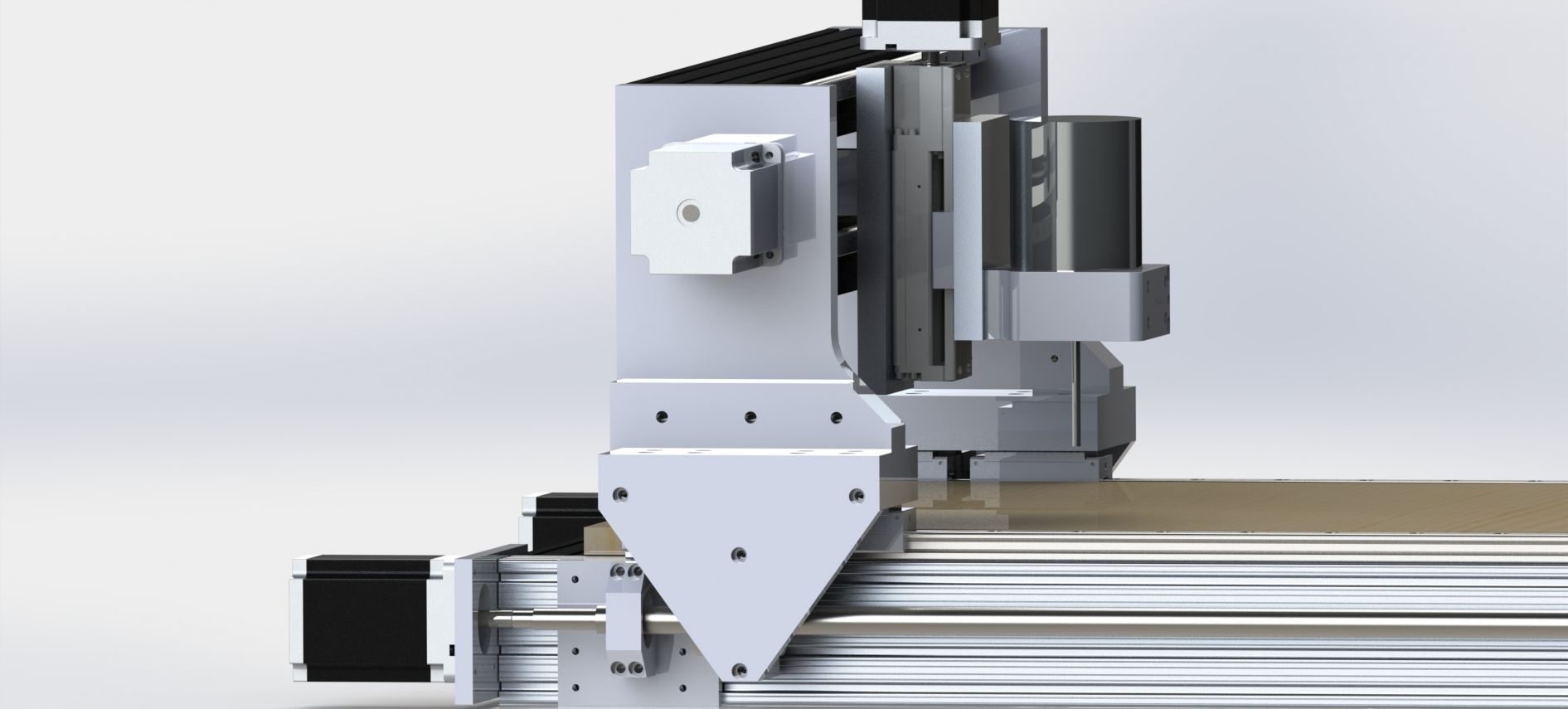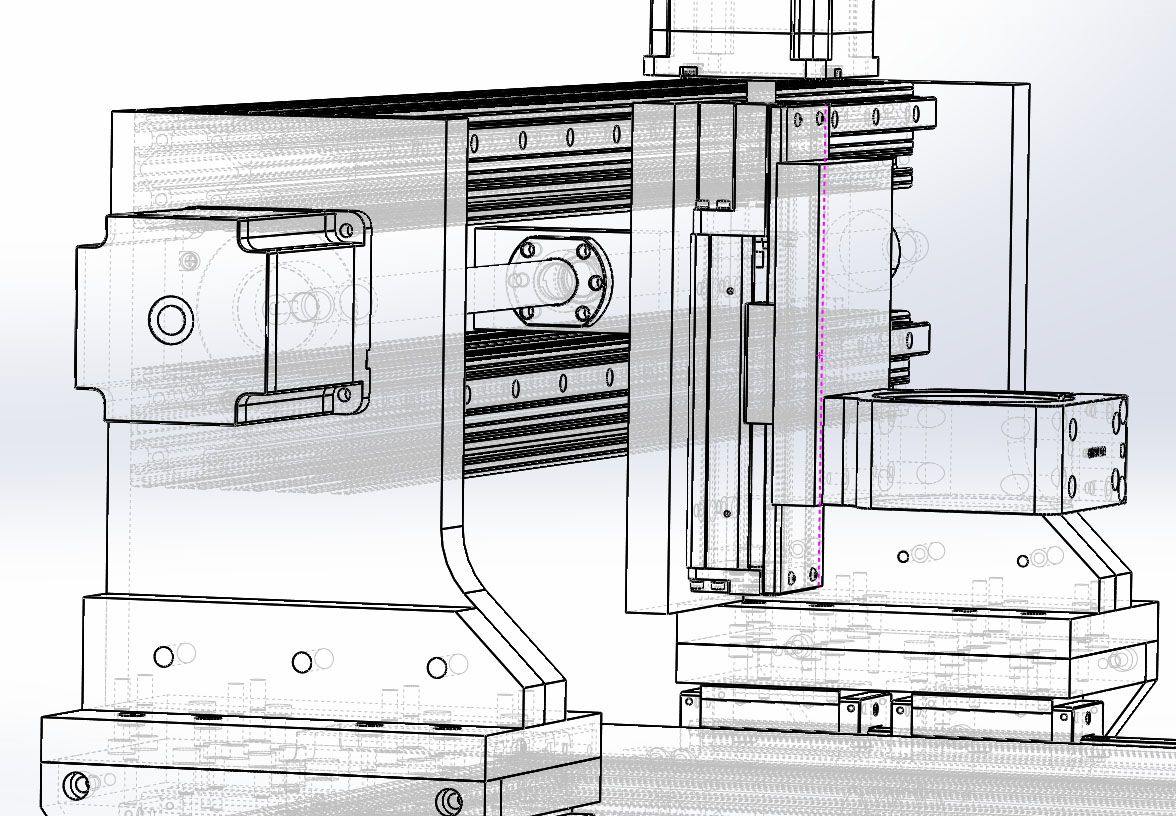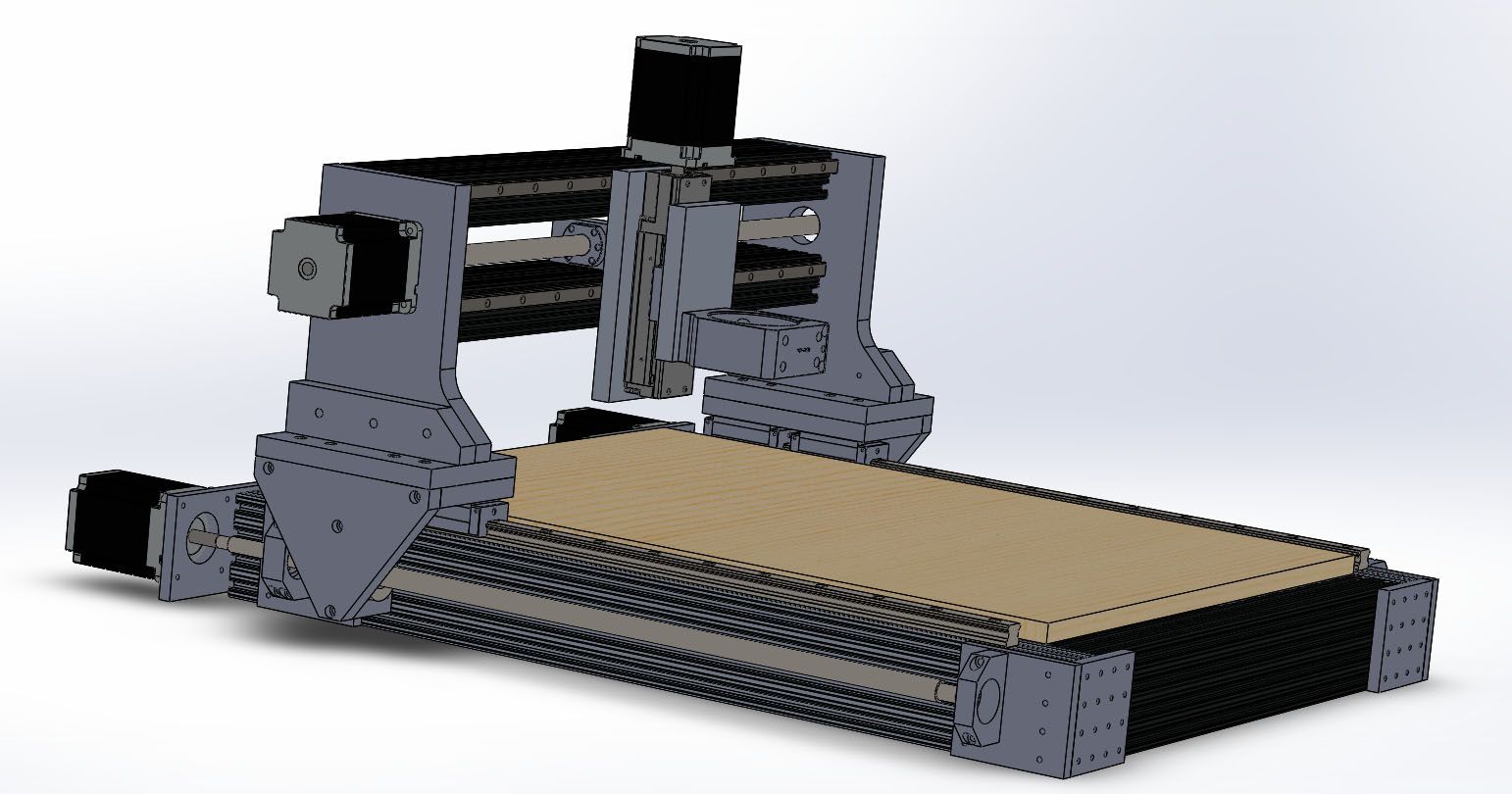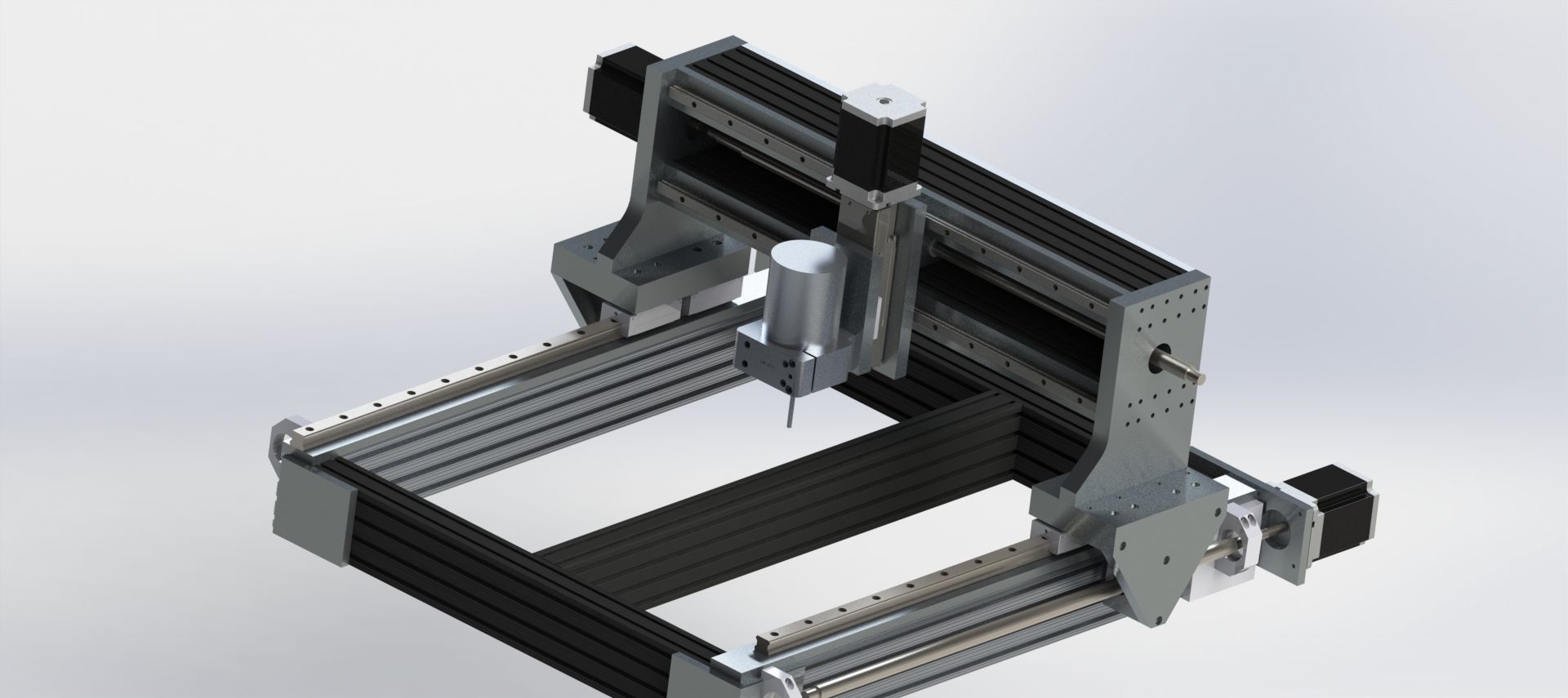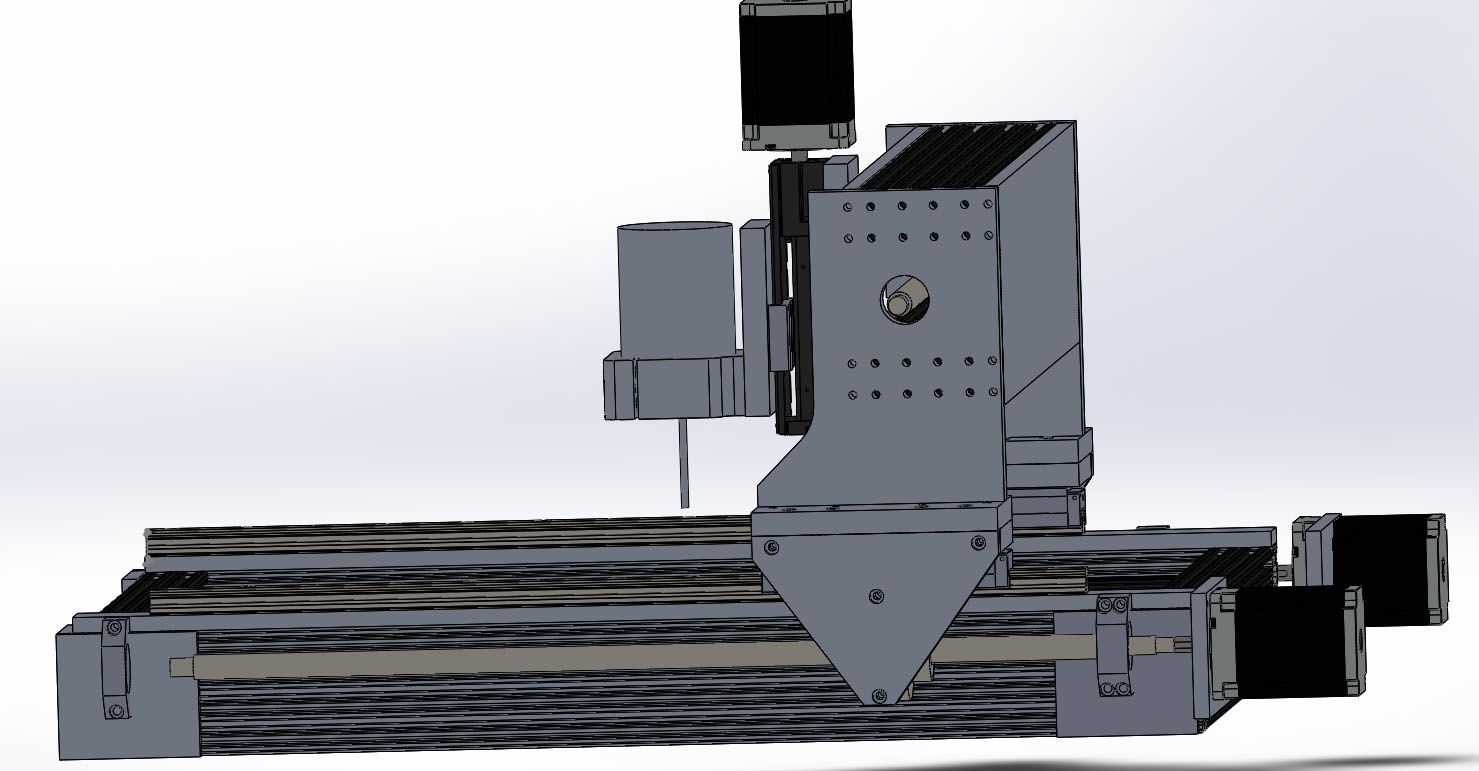Looks like I'm getting a lot of hits, but no responses!
I would really like your opinions, good - bad - ugly.... what ever
Any questions or if you want me to export my files to something more usable for you to look at - Just let me know!
I plan on using on the Y axis linear rails, NSK that are @29.75 inches long and 15[larger?]mm wide with 2 trucks per rail.
X axis linear rails NSK @23.75 inches long and 15mm wide with 2 trucks per rail
X axis ballscrew THK, @ 26 inches of thread and is @ 3/4 inch in diameter.
Y axis ballscrew Dual THK or NSK, @ 32 ish inches of thread and is @ 1/2 inch in diameter.
Z axis uses an all-in-one THK KR33 actuator with integrated ballscrew that has @4 inches of travel.
I know i would not need Nema 34 motors, but i rather go larger and move this to a larger build if feasible in the future.





 Reply with Quote
Reply with Quote



